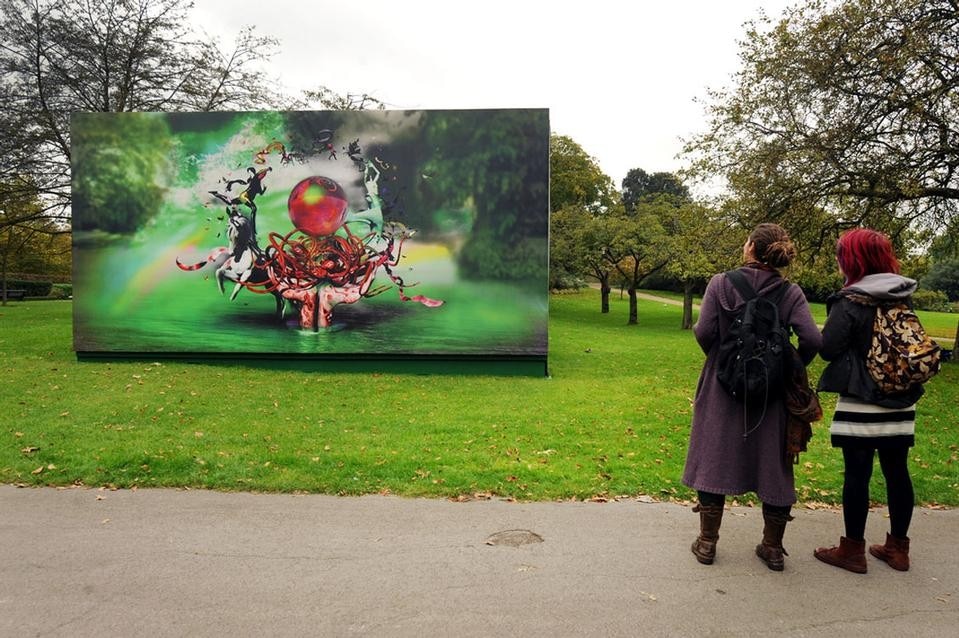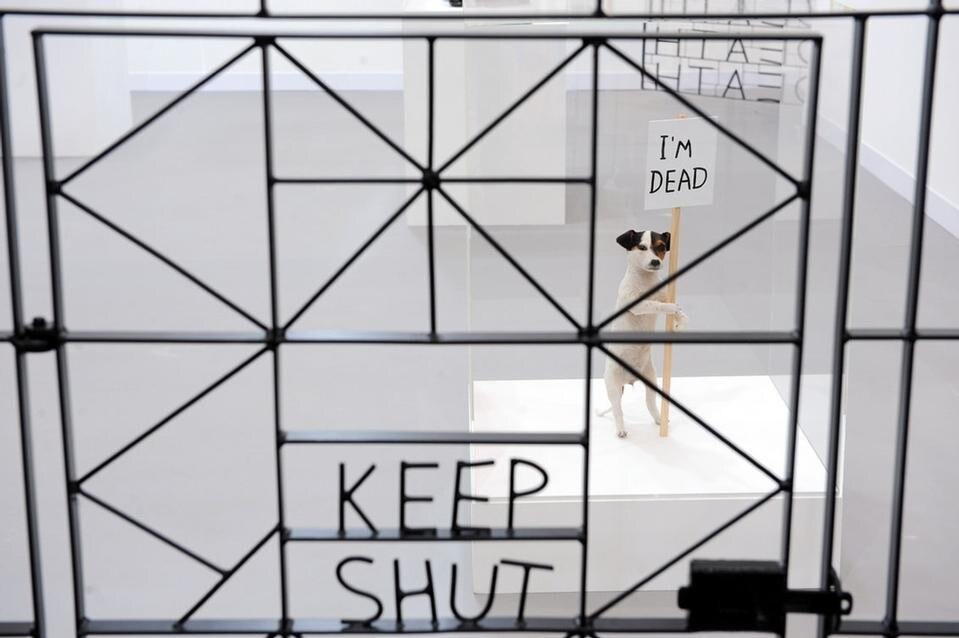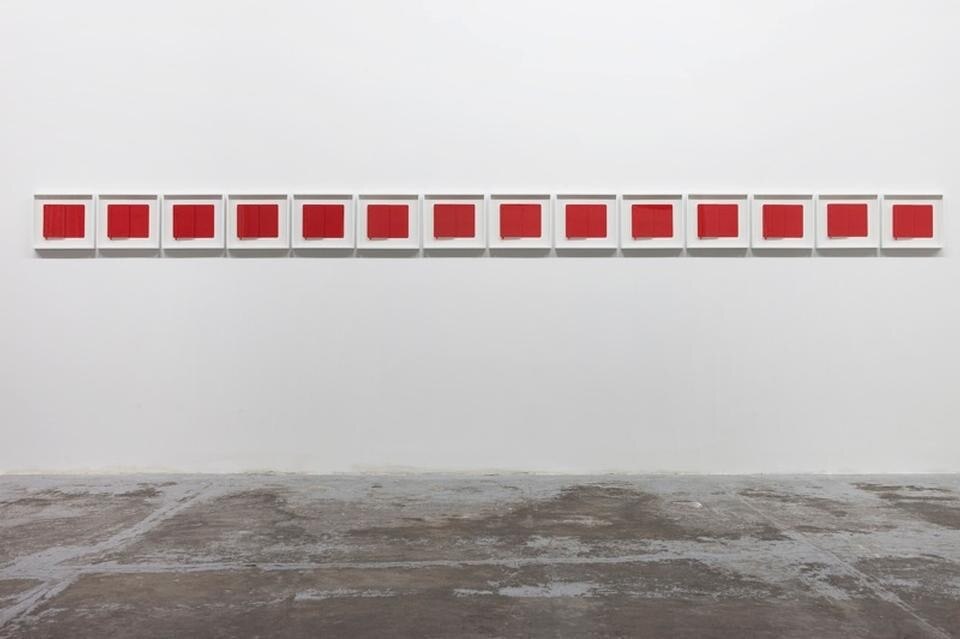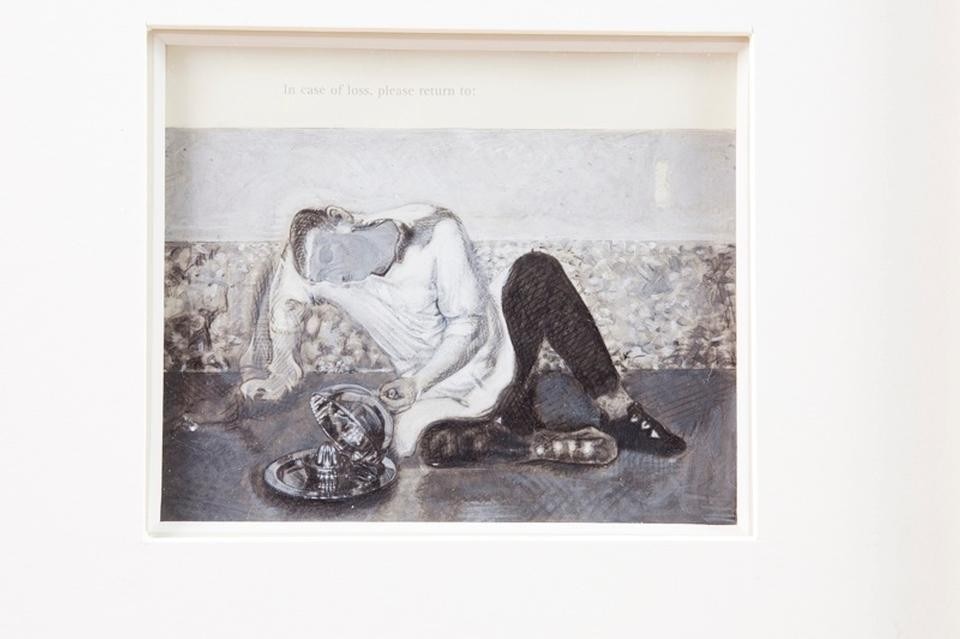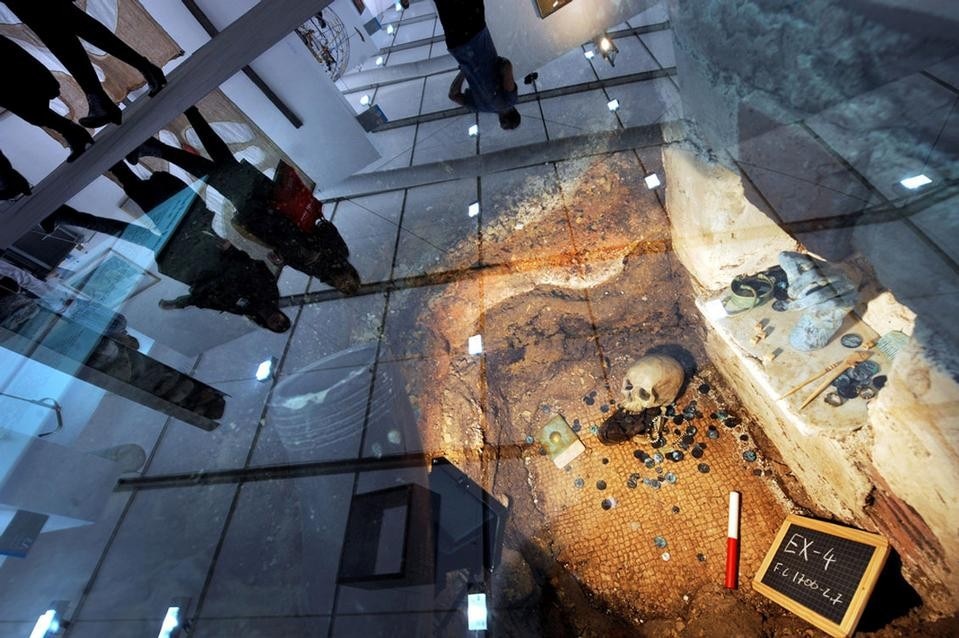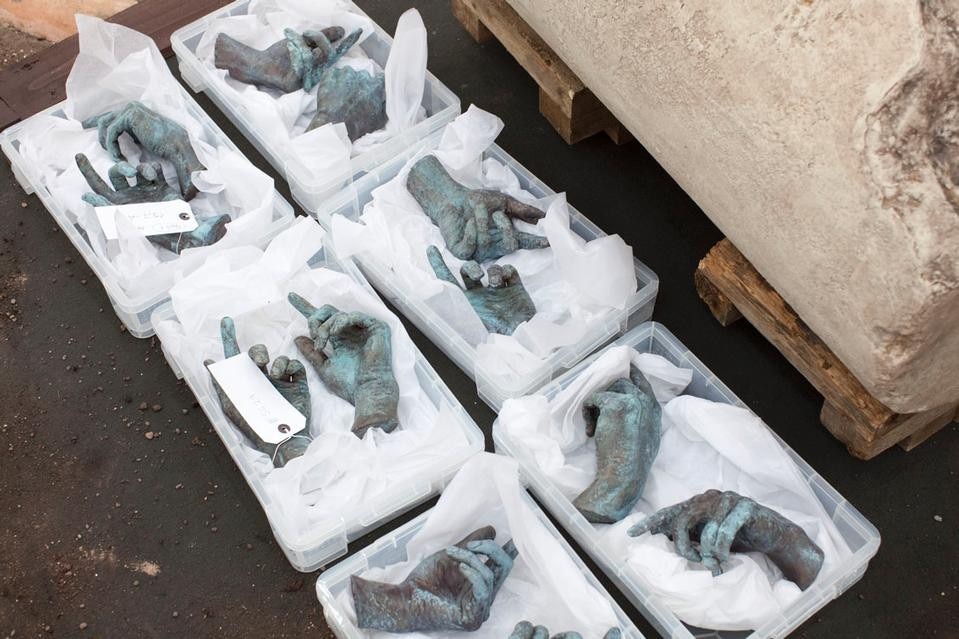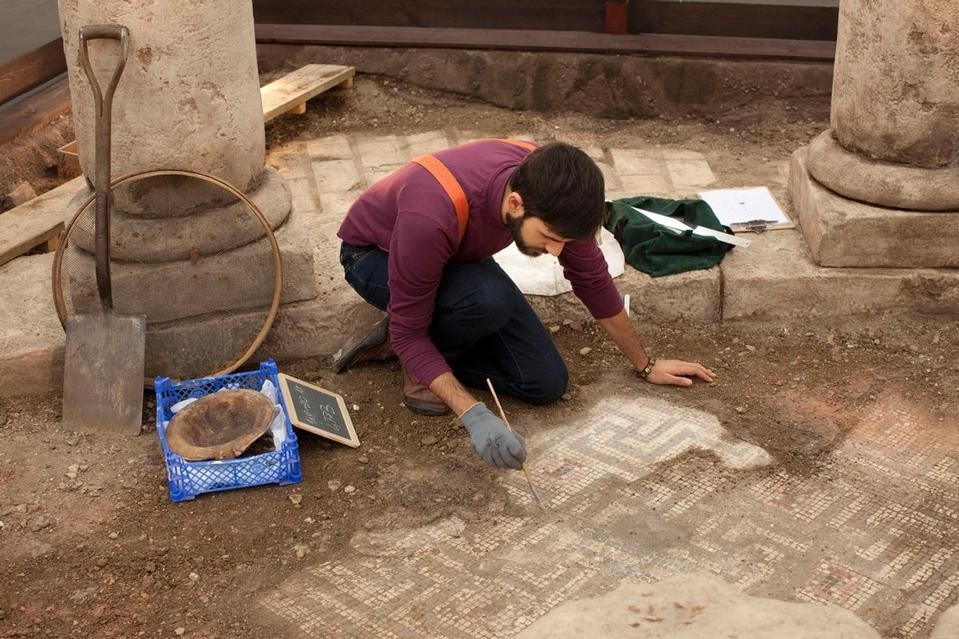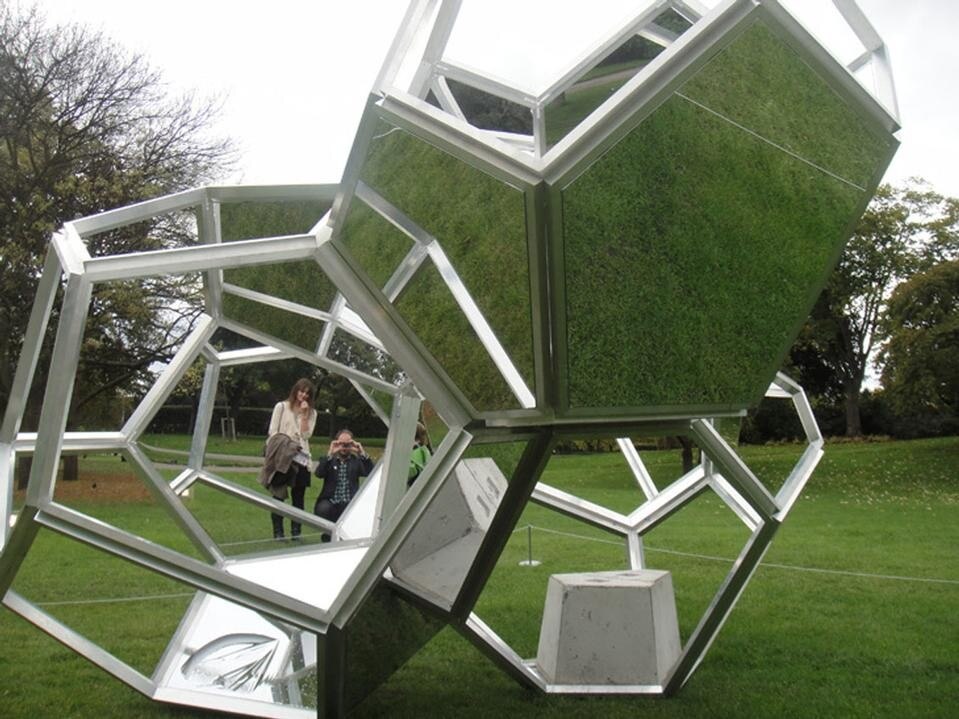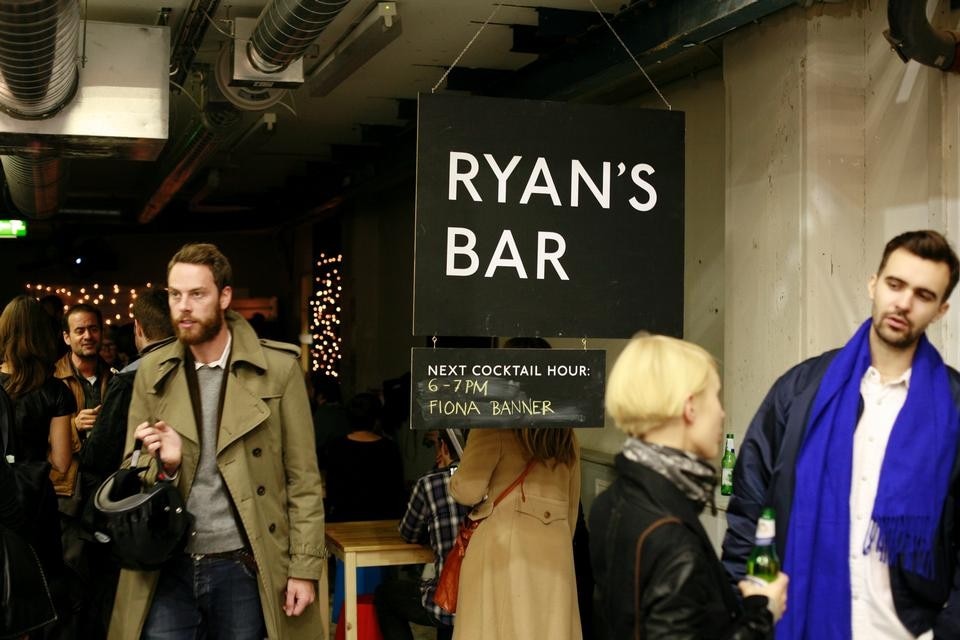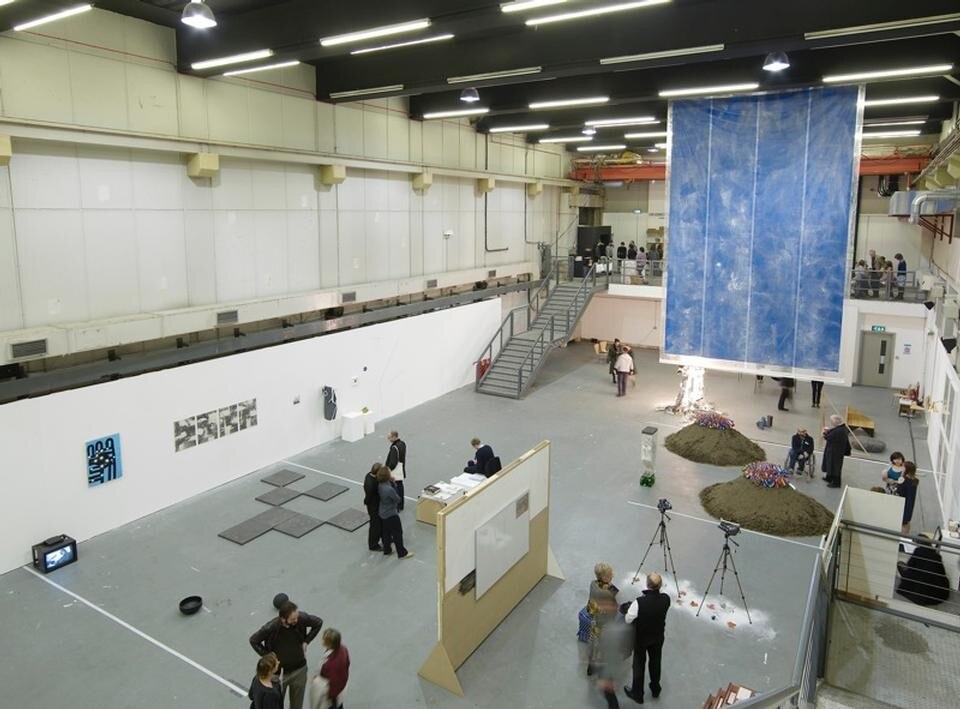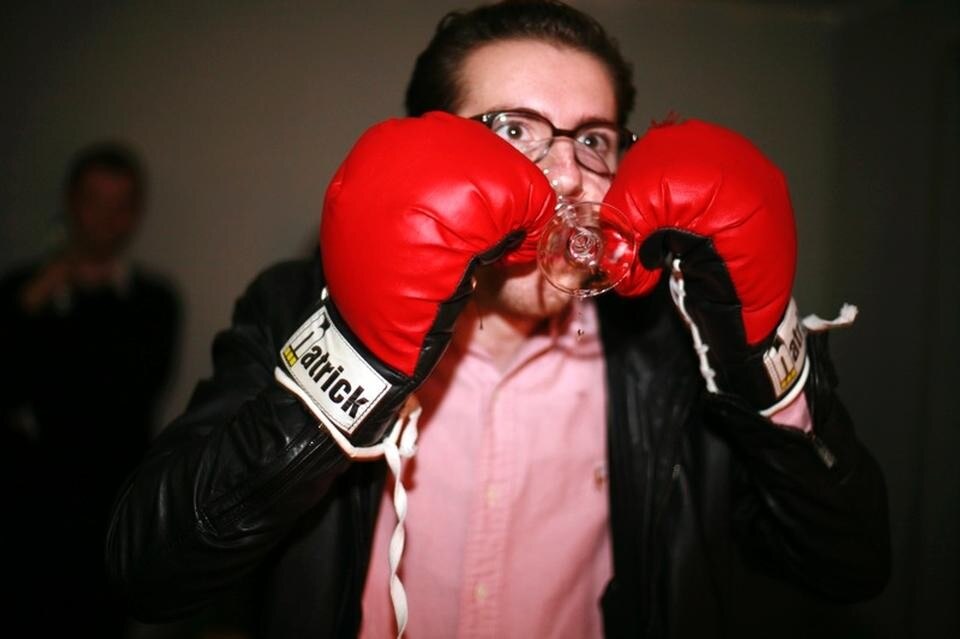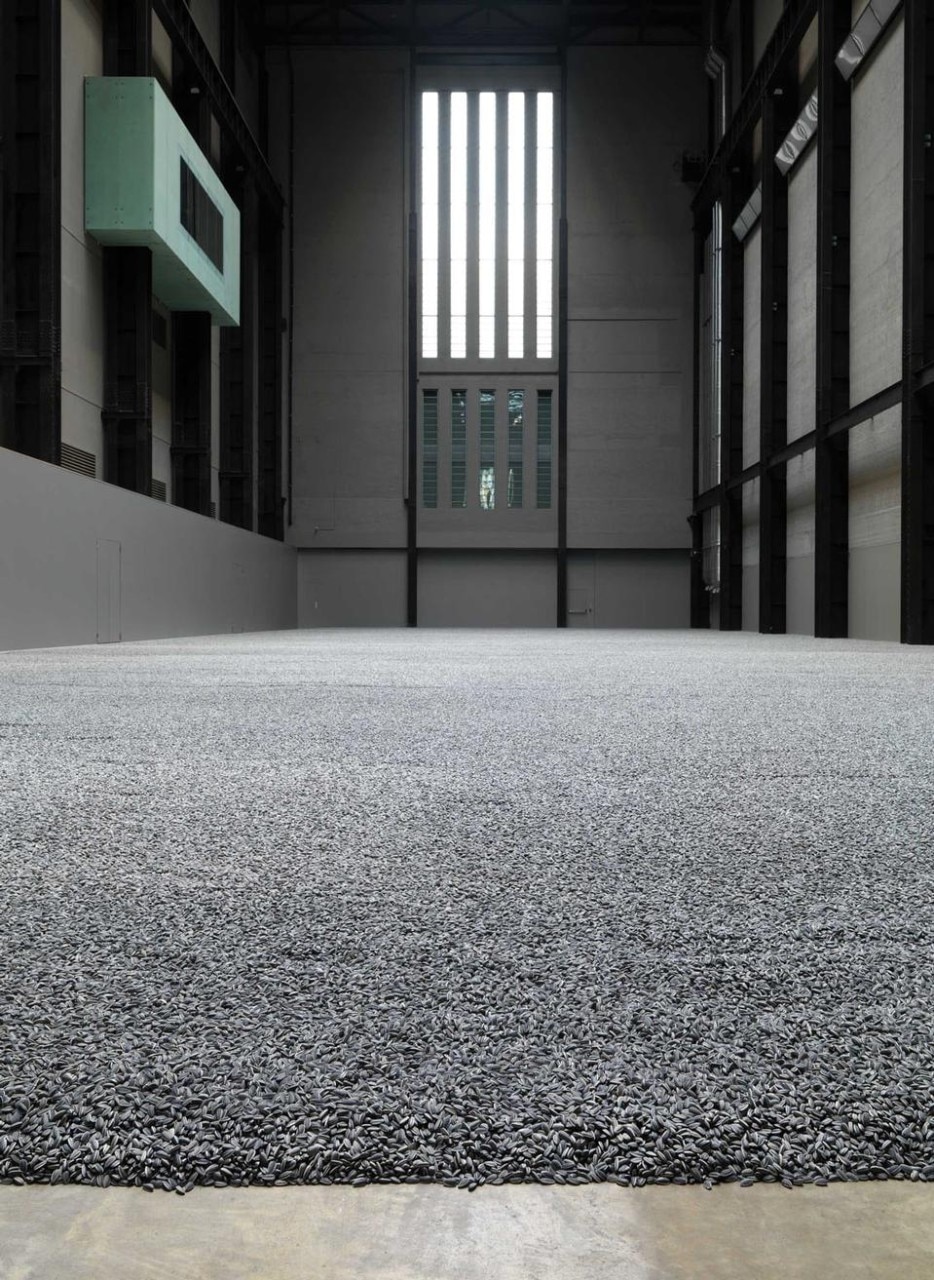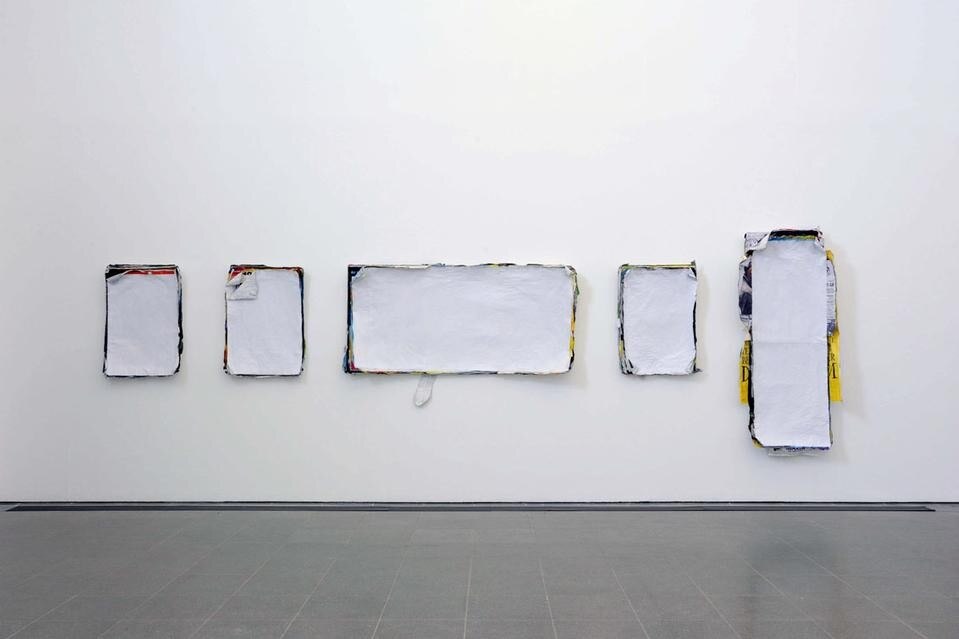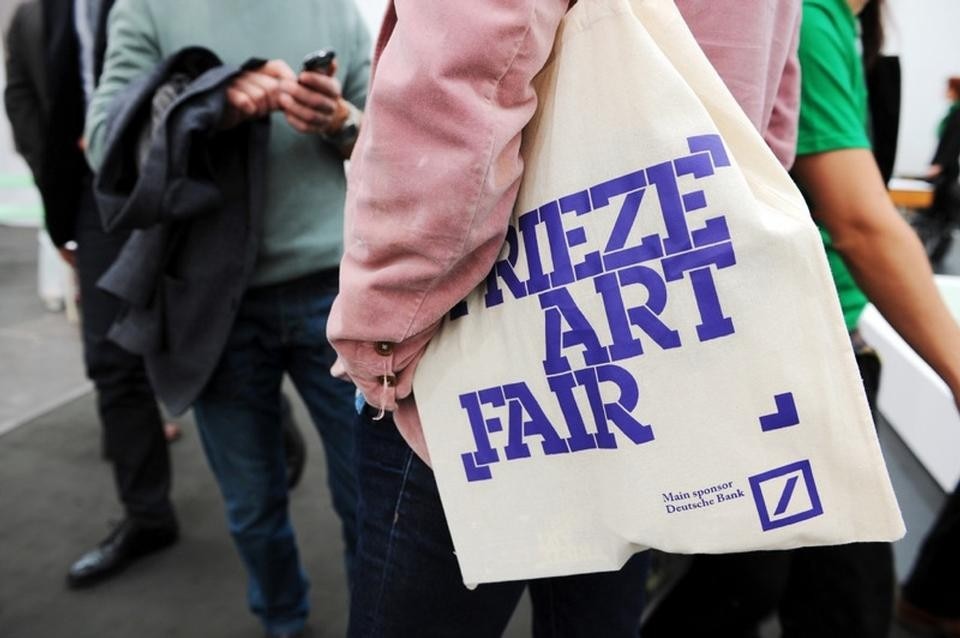Wandering through the stands, we came across some gems (one in particular, a new series by Pietro Roccasalva, presented by gallery Zero in Milan: a sequence of red moleskine notebooks appear identical but each reveals, hidden between the pages, a different disturbing and enigmatic variation of the waiter, the artist's leitmotif). But the focus of the fair, according to many, was below it. The fair's floor, hosted (or hid?) an installation conceived by Simon Fujiwara for the 2010 Cartier Award.
Corridor intersections and entire floor sections were replaced with glass panels. Below them, Fujiwara set up the remains of an ancient civilization simulating a recent discovery in Regent's Park and its subsequent restoration and comment. Playing with archeology's visual language – and educational authority – Fujiwara's installation created a strange attraction for the public of collectors who explored the fair in search of purchases: halfway between a memento mori and a reflection upon the urge to possess objects, upon the strange routes that lead to their permanence in time or, conversely, to their disappearance.
And not below the fair, but outside it, two other interesting events were held: Frieze Film, a film program curated by Sarah McCrory in collaboration with LUX (four films commissioned by the fair and screened in a temporary theater built inside the park. Among them, a splendid videocollage by Stephen Sutcliffe) and the Frieze Sculpture Park, a sculpture park that, despite the important names and some clearly successful projects (especially Ei Arakawa, in performance with Karl Holmqvist and Tomas Saraceno), could not escape its somewhat slapdash atmosphere which, perhaps, is typical of sculpture parks in any case.
In contrast to the extravagant wealth of the fair, the second edition of the parallel fair, "Sunday" (the first, concomitant with Weekend Gallery in Berlin, was already described on domusweb.it), was held in a nearby university pavilion. The impression of visitors upon entrance was almost unanimously that of relief. Escaping from the chaos of Frieze, they found themselves in a more relaxed atmosphere somewhat like a collective show both in terms of the often consistent aesthetic of both artists and galleries as well as in terms of the exhibit design which was conceived to emphasize just that harmony (including Ryan's Bar, a bar designed by Ryan Gander where, every day, two artists took turns serving cocktails of their own invention).
Outside the fair were also, of course, London's contemporary art institutions, each of which opened a new exhibition to take advantage of the international audience. First of all, the Hayward Gallery presented a rich overview dedicated to the presence of dance in contemporary art; but also the Serpentine held a Klara Lidén retrospective and the Barbican Centre's Curve Gallery staged a special project created during Damián Ortega's month-long residence. Just before the Frieze, the Tate Modern opened a special project by Ai Weiwei. The room, unfortunately, was not accessible because it was discovered, during the course of the show, that the hundred million porcelain sunflower seeds, which occupied the raised floor of the Turbine Hall, raised toxic dust when stirred. The installation, curiously, was financed by Unilever and not by another important Tate sponsor, BP.
Vincenzo Latronico
